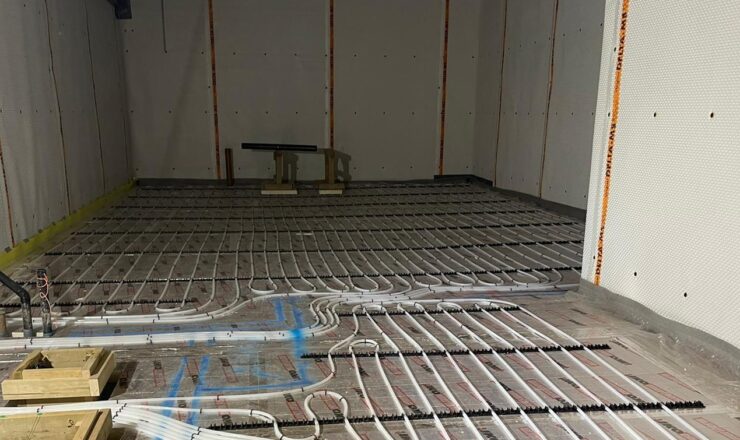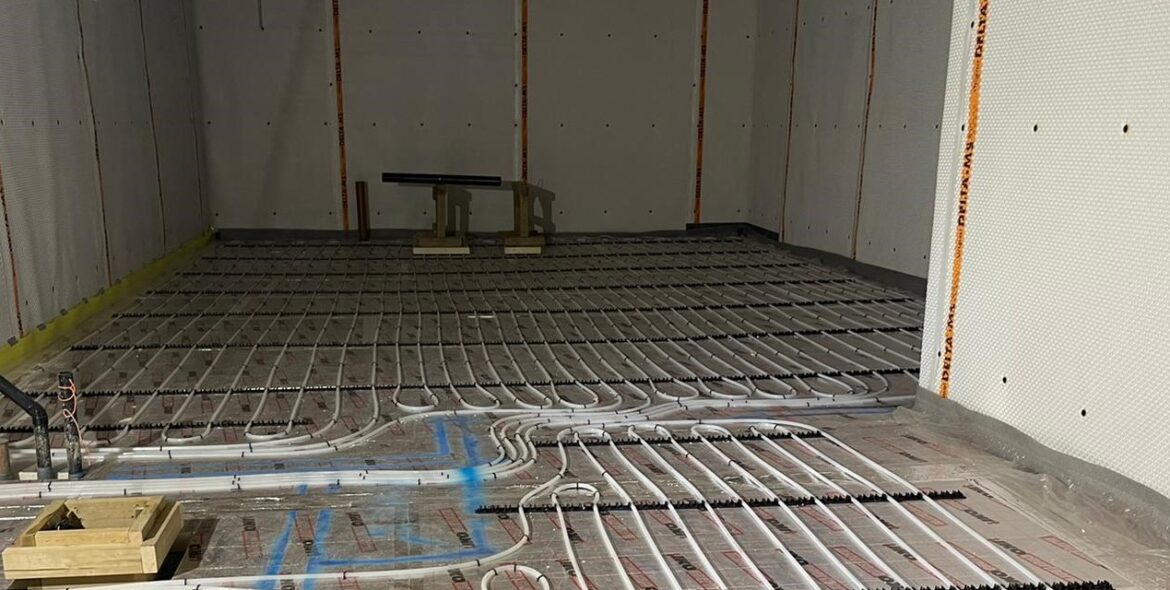Underfloor heating is a type of heating system that is installed under the floor surface of a building. It works by heating the floor from below, which in turn warms up the room above.
A UFH water system uses hot water to heat the floor. Water is heated in a boiler or heat pump and then circulated through pipes that are installed under the floor. The pipes are usually made of polyethylene or cross-linked polyethylene (PEX) and are laid out in a series of loops or circuits. The hot water in the pipes heats the floor, which in turn radiates heat upwards into the room. UFH water systems are typically more efficient than electric systems, as they use lower temperatures and require less energy to maintain a comfortable temperature.
An electric UFH system, on the other hand, uses electrical cables or mats to heat the floor. The cables or mats are installed directly under the flooring material and are connected to a thermostat that controls the temperature. When the thermostat senses a need for heat, it sends an electrical current to the cables or mats, which then generate heat. Electric UFH systems are usually easier and cheaper to install than water systems, as they don’t require any plumbing or boiler installation. However, they are typically more expensive to operate, as they use higher temperatures and require more energy to maintain a comfortable temperature.
In summary, the main difference between UFH water systems and electric systems is the way they generate and distribute heat. UFH water systems use hot water in pipes to heat the floor, while electric systems use electrical cables or mats. UFH water systems are typically more efficient but require more installation effort and cost, while electric systems are typically easier and cheaper to install but more expensive to operate.
Nowadays, technology also lets us install smart thermostats which are very beneficial. Those types of thermostats can be controlled remotely through a smartphone app or a voice assistant, such as Amazon Alexa or Google Assistant. They use machine learning algorithms to learn a user’s preferences and adjust the temperature, accordingly, potentially saving energy and money on utility bills.
One possible future for smart thermostats is increased integration with other smart home devices, such as smart lights and smart locks. This would allow for greater automation and convenience, as well as the potential for energy savings by coordinating the usage of different devices. Another trend in the smart thermostat market is the use of sensors to detect occupancy and adjust the temperature accordingly. This could potentially lead to even greater energy savings by reducing the amount of time a home is heated or cooled when nobody is present. Overall, the future of smart thermostats is likely to involve even greater connectivity and automation, as well as more advanced features that enhance their energy-saving capabilities and improve overall home comfort.
